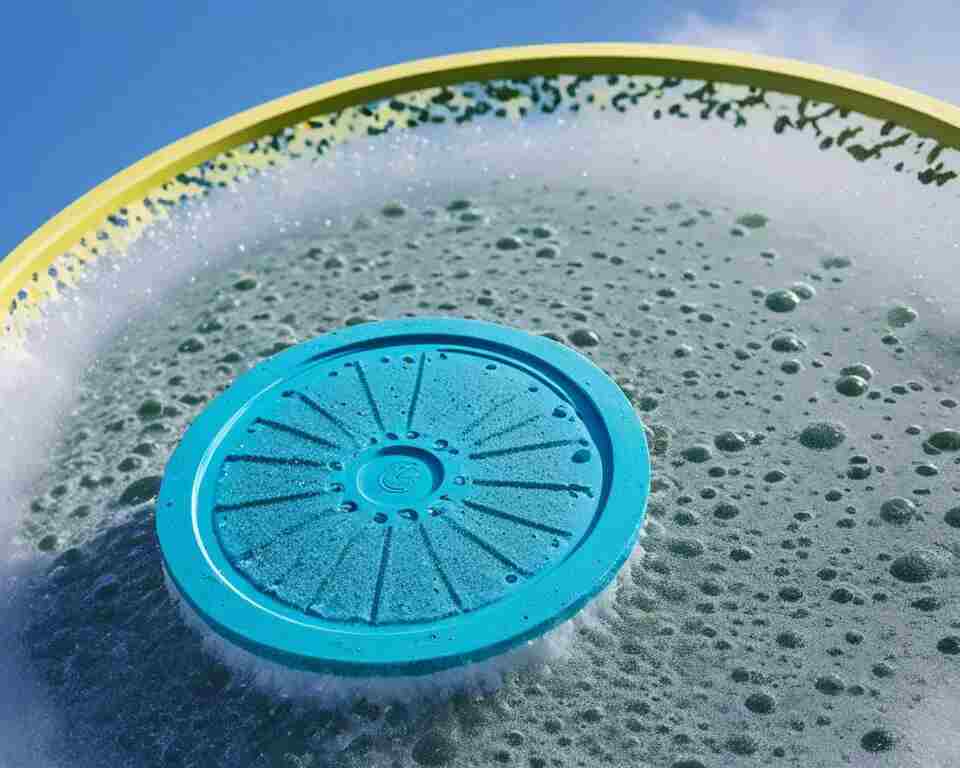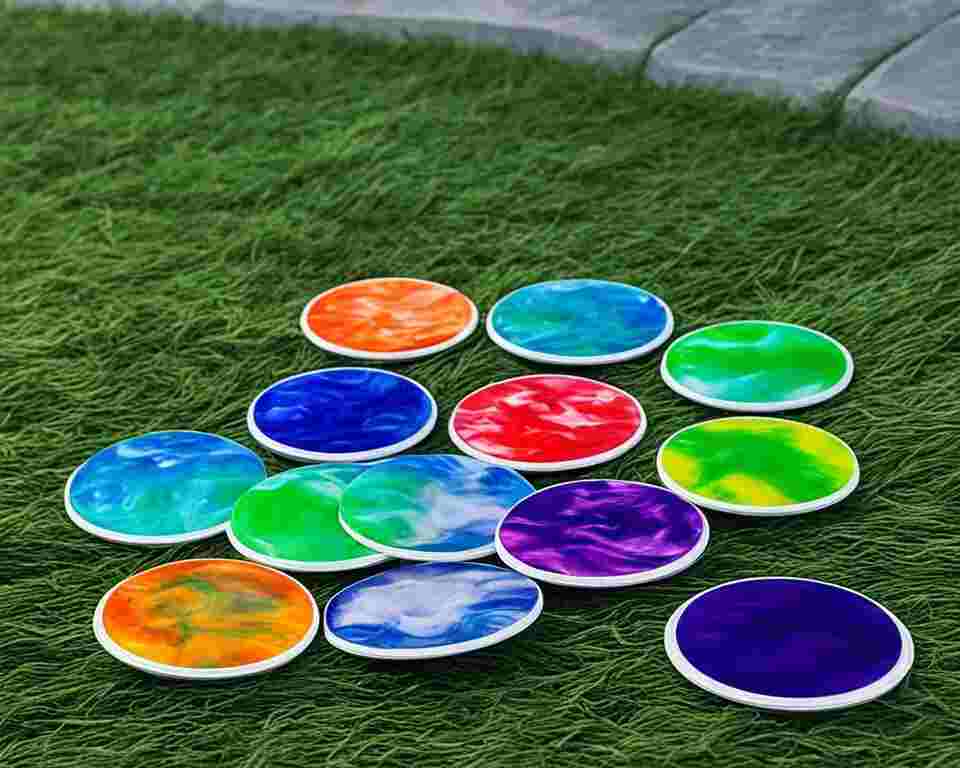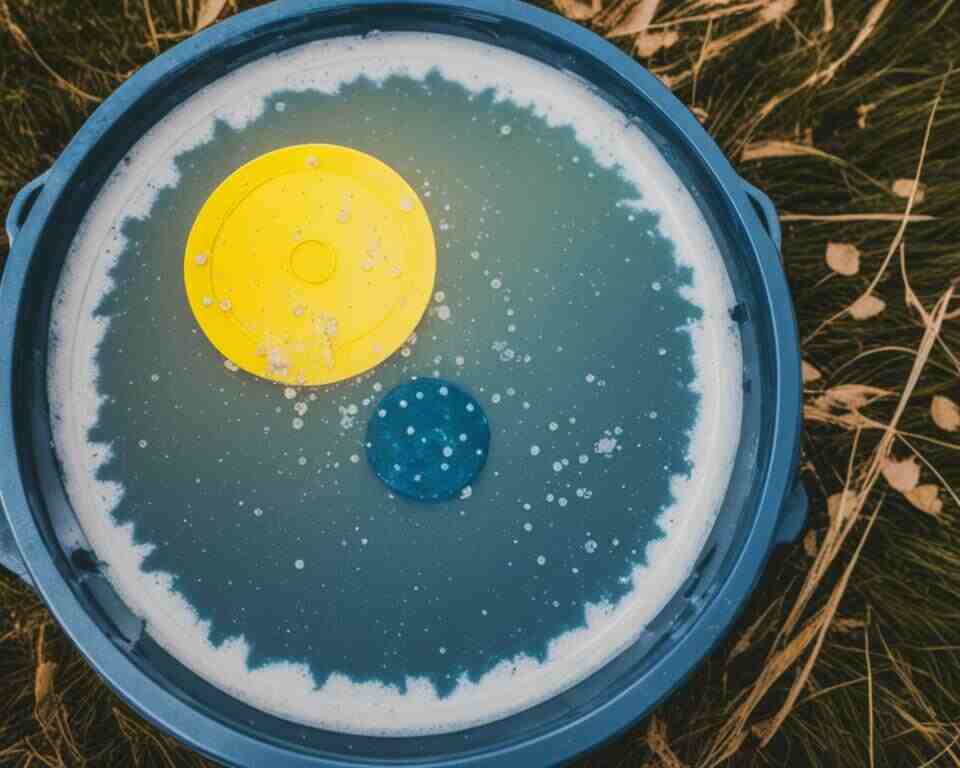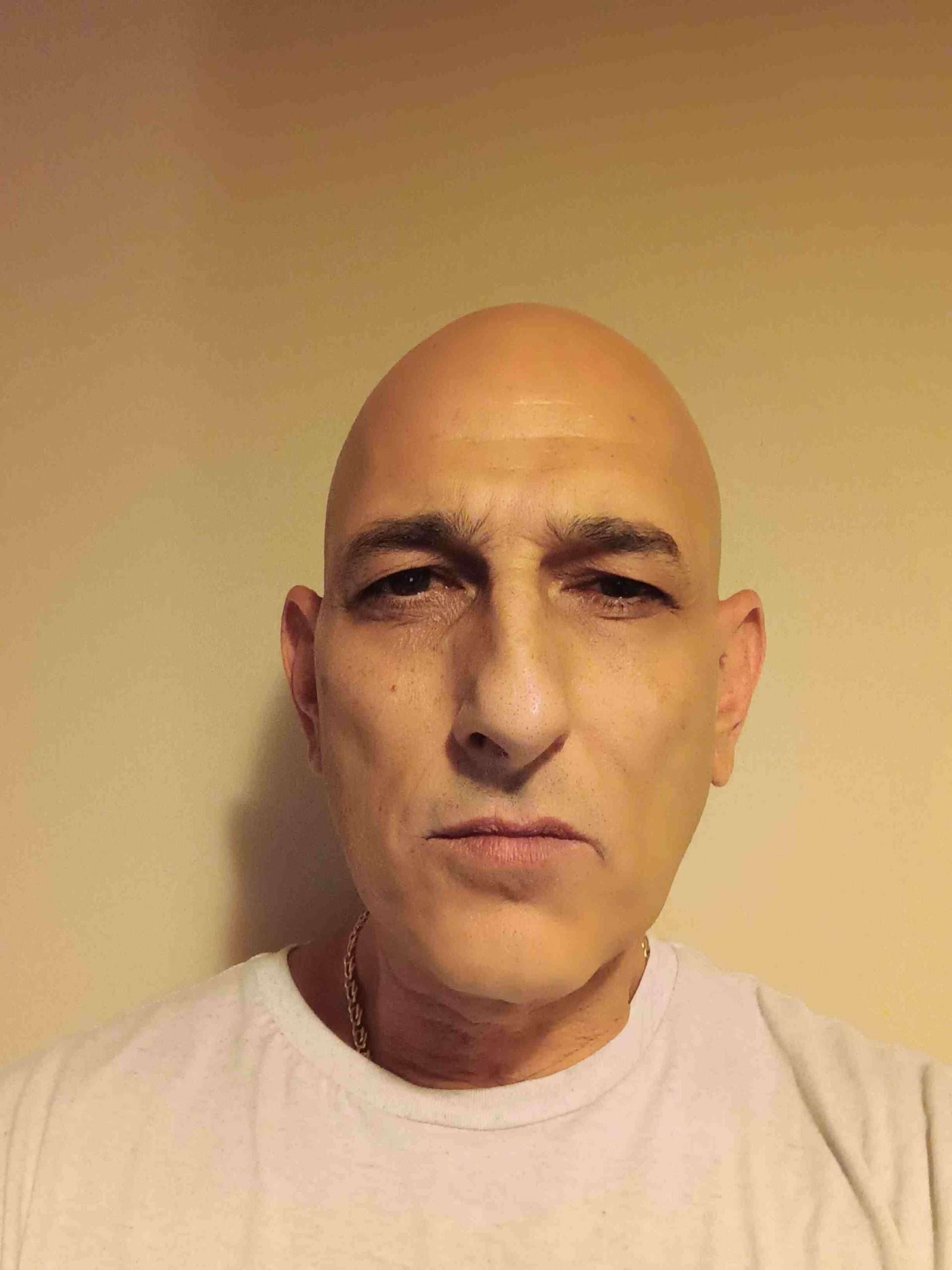As passionate disc golfers, we’re constantly striving to maintain the pristine condition of our equipment while enhancing our gameplay. One common challenge many of us face is dealing with stains or discoloration on our discs. To address this issue, a prevalent practice among disc golf enthusiasts is bleaching discs to effectively remove blemishes and restore their original appearance.
But is this method safe and effective? Let’s dive into the topic of bleaching disc golf discs to explore its safety, potential benefits, and any associated risks. Additionally, we’ll provide you with a comprehensive guide on disc cleaning methods and maintenance tips to ensure your discs remain in top condition for the course.
Key Takeaways:
- Discover the truth behind bleaching disc golf discs and its impact on performance.
- Explore alternative disc customization methods apart from bleaching.
- Learn essential disc cleaning methods and maintenance tips for optimal disc longevity.
- Understand the risks and benefits associated with disc dyeing compared to bleaching.
- Find out the best practices for disc care and maintenance to enhance your disc golf game.

Can You Bleach a Disc Golf Disc?
Bleaching a disc golf disc to eliminate stains or discoloration is indeed a viable option for many players seeking to restore the aesthetic appeal of their discs, as the bleaching process can effectively lighten or remove various types of blemishes that may accumulate over time from regular use on the course.
To remove stains, blemishes or discoloration on a disc golf disc effectively, follow these step-by-step instructions:
- First, gather the necessary materials: a disc golf disc, household bleach, water, a spray bottle, and gloves.
- Make sure you are in a well-ventilated area and wearing protective gloves.
- Prepare a mixture of bleach and water in a spray bottle. The recommended ratio is 1 part bleach to 3 parts water.
- Thoroughly clean the disc with mild soap and water to remove any dirt or debris.
- Liberally spray the bleach solution onto the stained, blemished or discolored disc.
- Allow the bleach to sit on the disc for a few minutes, but avoid leaving it on for too long, as it can damage the disc’s plastic.
- Rinse the disc with water to remove the bleach solution.
- Pat dry the disc with a clean towel or let it air dry completely.
- Inspect the disc and repeat the process if a lighter color or desired pattern is not achieved.
It’s important to note that disc bleaching should be done with caution to avoid damaging the disc’s plastic or compromising its flight characteristics. It’s recommended to test the process on a less valuable or older disc first before attempting it on a disc you value highly.
The best way to bleach stains on a disc golf disc is to follow the described process carefully and take the necessary precautions to protect yourself and the disc. Always wear gloves to avoid direct contact with the bleach and work in a well-ventilated area to prevent inhaling fumes.
To ensure the safety and longevity of your disc golf disc, it’s essential to practice regular cleaning and maintenance. Cleaning the disc with mild soap and water after each round can help remove dirt and stains, keeping it in optimal condition for many games to come.
Understanding the Disc Golf Disc Dyeing Phenomenon
Disc dyeing has become a popular trend among disc golfers, offering a creative outlet for customization and allowing players to add unique designs to their discs. Dyeing techniques have advanced significantly over the years, resulting in stunning and intricate designs that enhance the visual appeal of disc golf discs.

So, what is it that drives disc golfers to dye their discs? The answer lies in the desire to express individuality and personalize their equipment. Customized discs stand out on the disc golf course, allowing players to add a touch of personality to their game.
Disc dyeing encompasses various techniques and methods, each producing different effects and designs. Common techniques include immersion dyeing, stencil dyeing, and shaving cream dyeing. Immersion dyeing involves submerging the disc in a dye bath, resulting in vibrant and all-over coloration. Stencil dyeing allows for precise designs by using stencils to block certain areas of the disc from dye penetration. Shaving cream dyeing involves applying dye onto a layer of shaving cream, creating unique and marbled patterns.
When comparing disc bleaching to disc dyeing, it’s clear that the latter provides a more lasting solution for removing blemishes, stains, and discoloration. While bleaching eliminates stains and discoloration, dyeing offers the opportunity for players to either restore the disc’s original color or completely transform its appearance with vibrant hues. Furthermore, dyed discs typically maintain their colors for a longer duration, resisting fading and ensuring their visual impact remains vibrant over time.
It is important to note that not all disc golf discs are suitable for dyeing. The type of plastic used in the disc can affect the dyeing process. Certain plastics, such as Champion and Star, are more receptive to dye, resulting in more vibrant and defined designs. On the other hand, discs made from less receptive plastics, like Pro-D or DX, may produce less saturated or blurred dye patterns.
Disc dyeing requires careful surface preparation to ensure optimal dye absorption. Before dyeing, players must thoroughly clean the disc and remove any residue or oils. This can be done by gently washing the disc with warm water and mild dish soap, followed by a gentle scrub with a soft brush. Once cleaned and dried, the disc is ready for dye application.
In summary, disc golf disc dyeing has become a popular phenomenon among disc golfers, allowing them to showcase their creativity and individuality on the course. With various dyeing techniques and methods available, disc golfers can customize their discs to their liking. However, it is essential to consider the plastic type of the disc and follow proper surface treatment instructions to achieve the best dyeing results.
Conclusion
In conclusion, maintaining the cleanliness and condition of disc golf discs is crucial for optimal performance and longevity. To keep your discs in top shape, it is important to invest in high-quality disc golf disc cleaning products. These products are specifically designed to remove discoloration, stains, and dirt from the surface of your discs without causing damage.
When it comes to restoring disc appearance by removing stains or discoloration, bleaching is a popular method among disc golfers, but it may not be suitable for everyone. Fortunately, there are alternative techniques such as disc dyeing that allow you to add unique designs to your discs without compromising their integrity. By exploring different disc customization methods, you can find the one that best suits your preferences and style.
Lastly, to ensure the longevity of your disc golf discs, it is essential to follow proper disc maintenance techniques. Regularly washing your discs with mild soap and water, and storing them in a cool and dry place can significantly extend their lifespan. Additionally, avoiding rough surfaces and excessive force can prevent unnecessary wear and tear on your discs.
By implementing these disc golf disc cleaning and maintenance tips, you can keep your discs in excellent condition and enjoy optimal performance on the disc golf course. Remember, taking care of your equipment is essential for a successful and enjoyable disc golf experience.


